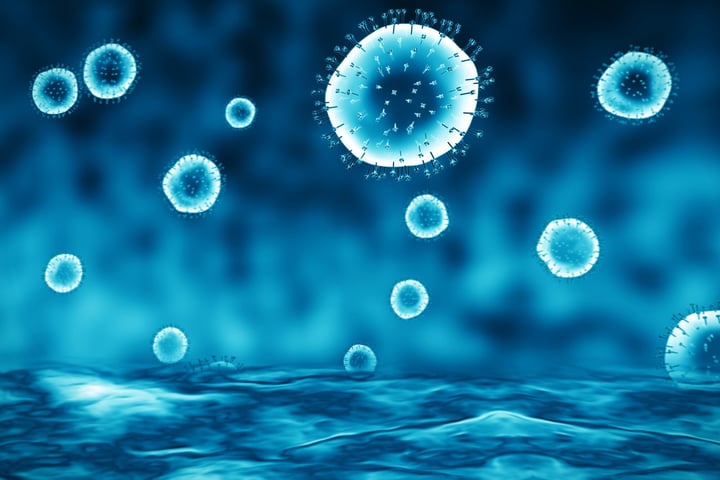
Polymers are commonly used as materials in biomedical applications. The surface properties of the materials need to be tailored to meet the requirements set by the application. One common approach in biomedical devices is to prevent biofouling as the attachment of microorganisms may result in the infection of the patient. Anti-biofouling of polymers is attractive as they can avoid the introduction of drugs which is one approach to prevent biofouling.
Several different anti-fouling strategies have been studied which are based on tailored surface wettability of the polymer surface. In general wettability of the surface is divided into four categories depending on the water contact angle (WCA). If WCA on the surface is
• < 10° the surface is superhydrophilic
• 10 ° - 90° the surface is hydrophilic
• 90° - 150° the surface is hydrophobic
• > 150° angles are superhydrophobic.
Superhydrophilic surfaces are completely wetted with water, forming a water layer on the surface which will prevent the adhesion of proteins, cells, and bacteria. Several hydrophilic polymers follow this wetting strategy for anti-fouling. The most investigated hydrophilic polymers for biomedical applications are PEG-based polymers. The anti-biofouling action of PEG-based polymers is the result of both steric and hydration effects and is dependent on the size, branching, and surface-packing density of the specific PEG molecule. Hydrophobic surfaces are rarely able to work as anti-biofouling surfaces although some examples can be found in the literature. Superhydrophobic surfaces, on the other hand, can offer anti-biofouling characteristics due to reduced contact between the water and the surface which leads to reduced adsorption of the proteins on the surface.
One additional aspect of the anti-biofouling surfaces that needs attention is their durability. As anti-biofouling surfaces are often a combination of chemistry and surface roughness, they are typically easily damaged by scratching, degradation, and rough handling. Enhancing durability is a significant challenge that needs to be addressed for widespread industrial use.
If you would like to learn more about different contact angle measurements used within biomedical applications, please download the white paper through the link below.
Learn about how QSense analysis can be used to assess adsorption of biologics and excipients to materials used in IV-bags
Learn about the past and future development of biomaterials in regenerative medicine.
Surface chemistry plays a significant part in terms of interactions with the human tissue.
Learn about the distinction between the two concepts biomaterials and tissue engineering and how they relate to each other.
Learn more about how biocompatibility is defined and what this property entails
What makes an implant integrate successfully? The answer lies at the surface interaction processes, and what happens there, short term and long term.
The concept ‘Biomaterial’ is fairly frequently encountered. Read about what defines a biomaterial and where this category of material is used.
